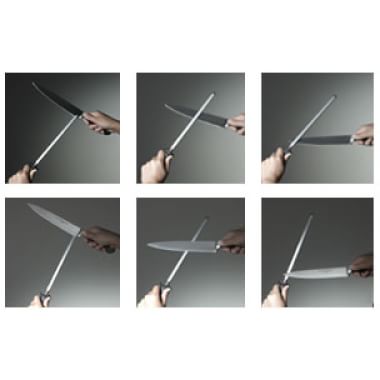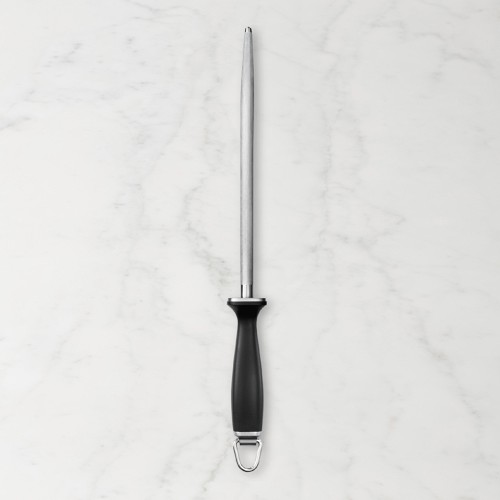
Honing and Sharpening Knives
A sharpening, or honing, steel maintains a knife blade's edge, while a knife sharpener creates an entirely new edge, which should then be maintained with the steel.
Honing
A honing steel helps maintain a knife's sharp edge by "trueing" it, or literally smoothing and realigning the worn carbon steel on the knife's edge—the microscopic "teeth" that actually do the cutting. Before each use, hone a knife's entire cutting edge on a steel. Hold the blade at a 20-degree angle to the steel's shaft, then draw the knife lightly in one smooth motion from the heel of the blade to the tip. Repeat five or six times on each side of the blade, alternating with each stroke for an even edge. Keep the number of strokes equal for both sides.
Sharpening
Even the finest knives will dull with regular use, but periodic sharpening will restore the blade's keen edge. A dull knife requires greater force, tears at food, tires the hand and increases the odds of cutting yourself. Use a professional-quality automatic knife sharpener to create a new razor-sharp edge, or take your knives to a professional sharpener, preferably one who uses a stone rather than metal rollers, which can weaken the blade.
Cleaning
Fine cutlery should never be washed in the dishwasher; the intense heat and radical temperature changes will dull the knife blade and may cause the handle to deteriorate. After each use, wash knives by hand in warm soapy water, then rinse and thoroughly dry them with a soft towel. Do not leave them to soak, and avoid using abrasive cleaners or scrubbing pads. Taking a few minutes to routinely care for your knives will reward you with a lifetime of superior performance.
Recommended Products
-
$85
(8)









